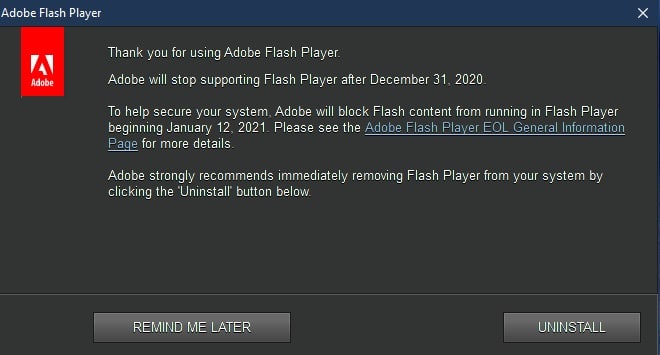

Microsoft also notes that updating to Windows 10, version 21H1 (Opens in a new window) or later will trigger Flash to be removed automatically. Once that happens, Flash will be removed automatically as part of the Windows Update, without the user having to do anything. It's also making its way into the Monthly Rollup and the Security Only Update for Windows 8.1, Windows Server 2012, and Windows Embedded 8 Standard. Then in July, the same KB4577586 update will be included in the Latest Cumulative Update for Windows 10, versions 1607 and Windows 10, version 1507. Starting in June, the Windows update KB4577586, described as “Update for Removal of Adobe Flash Player,” will be included with the Preview Update for Windows 10 versions 1809. Now, in an update to a Windows Blog post (Opens in a new window), Microsoft program manager Suchithra Gopinath has detailed a new plan. The Windows update released to carry out the removal didn't check to see if Flash had been installed using Adobe's standalone installer, meaning if you have ever installed Flash Player manually, it remains on your system. You may remember Microsoft attempted to remove the Flash Player from Windows 10 in October 2020, but ultimately failed to do so. However, Microsoft has a plan, and intends to rid Windows 10 of Flash forever no later than July. How to Set Up Two-Factor AuthenticationĪdobe's Flash Player reached the end of its life as 2020 came to a close, but the software continues to linger on Windows machines around the world.How to Record the Screen on Your Windows PC or Mac.How to Convert YouTube Videos to MP3 Files.


How to Block Robotexts and Spam Messages.


 0 kommentar(er)
0 kommentar(er)
